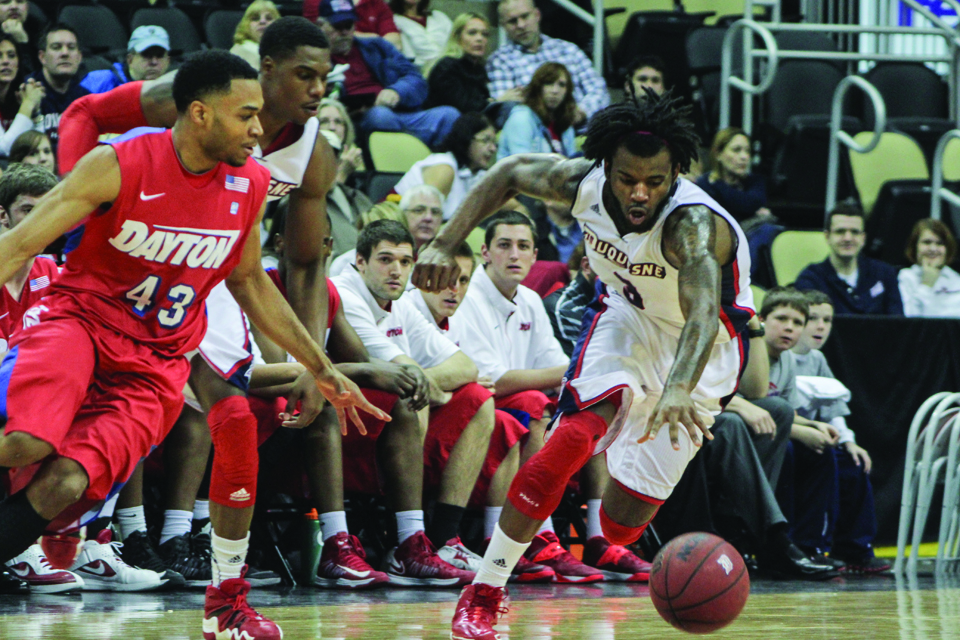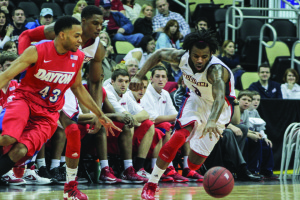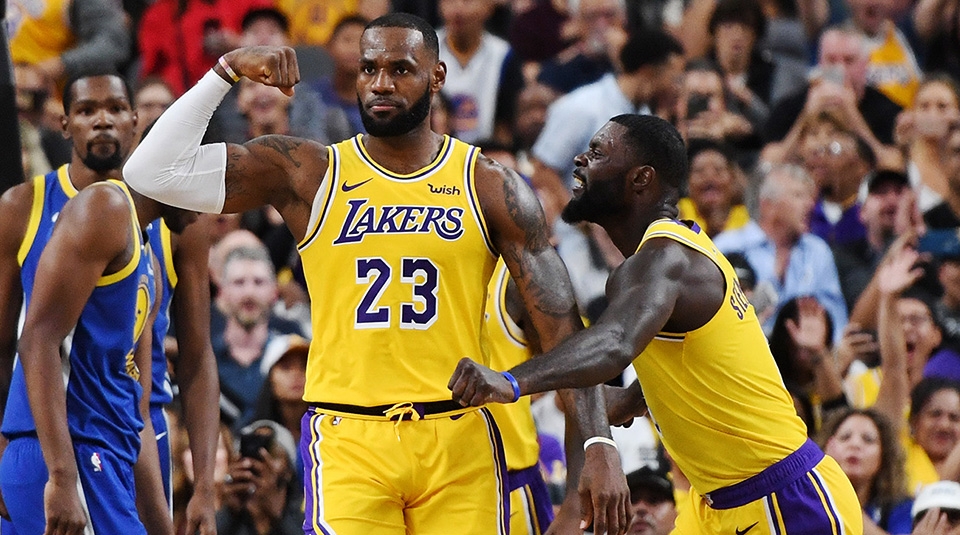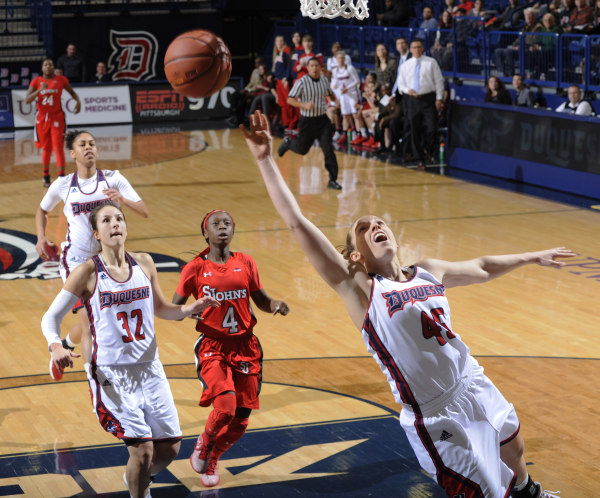

Julian Routh | News Editor
On a Wednesday afternoon in the middle of December, a reporter asked Ovie Soko what went wrong in the Dukes’ 68-59 loss to Penn State.
The fifth-year senior shrugged his shoulders, still holding a look of disgust on his face after fouling out with over five minutes to go in the game.
“Shot selection,” he said, choosing from the seemingly-endless laundry list of things Duquesne could have done better. Defense, free throw shooting, three-point shooting and distributing the ball were also acceptable answers.
That’s the way it was at the beginning of the season. Even during their five-game winning streak into January, the Dukes looked sloppy, rather than poised.
It was no one’s fault. Jim Ferry brought in eight first-year scholarship players before the season, including three transfers and five recruits. It would just be a matter of waiting until the new gang got used to playing together as a unit, which can take time.
But when it happened, and everything clicked, it was magical.
There was a point in the season when the defense tightened, the perimeter opened up and the shots were falling. When the players were excited, so were the fans. The Dukes were noisemakers in the Atlantic 10, a conference that allowed them only one last year.
It’s hard to believe they finished out the season 3-8, especially when they played arguably their best basketball of the season in the final two months. Down the stretch, they were losing games with dignity. It would all culminate to the final moments, when one mistake would decide the game.
That doesn’t signify bad basketball. It signifies a team that had the pieces to build the puzzle, but never quite assembled them in perfect fashion.
The first piece of the puzzle was Soko, who quickly emerged as the leader of the team. When Duquesne lost, he blamed himself, even when his stat line suggested otherwise. When they won, he gave his teammates all the credit.
Over the course of the season, it was fascinating to watch Soko’s development as a player. He first took the court as an overanxious, energetic big man who could always be counted on for a few questionable fouls at the end of games. He evolved, and evolved some more, into a well-rounded, versatile forward with a knack for causing havoc in the paint.
The second puzzle piece was behind the arc, in a 6’2’’ sophomore from Highlands High School. Micah Mason was among the best 3-point shooters in the nation, and for a while, it went unnoticed. And then, as teams caught on, Mason got less and less space to shoot, and yet, he still sunk shots. A lot of shots.
Then came Dominique McCoy, who may have been the most consistent player on the squad. He took the shots he knew he could make, and in return, finished with the fifth-highest field goal percentage in Duquesne history.
Add in the occasional buzzer-beater from Derrick Colter, lights-out shooting performance from Jerry Jones and heads-up play from L.G. Gill and the Dukes looked promising.
But the puzzle didn’t come together just yet.
It won’t be much different next year. Soko and Jones will be gone, but expect McCoy, Mason and Colter to return to the court even better than they were this season.
If Tra’Vaughn White can find his stroke from junior college, if Desmond Ridenous can slow down his play a bit, if Jeremiah Jones can take better shots and if Isaiah Watkins can get more playing time, Duquesne will be dangerous. Duquesne will be able to compete with anyone in the conference.
The A-10 was the best it has ever been this year, and somehow, the Dukes pulled off five wins, including one of the biggest wins in program history against then-No. 10 Saint Louis on Feb. 27.
It can only get better from here. Give credit to Ferry for turning a group of recruits from all over the country into a team.
A team that may someday be a finished puzzle on the Bluff.




